BUILDING YOUR OWN FAMILY YACHT IN INDIA
"Do seriously consider vacuum infusion based sandwich construction", advises Dr. Anantha Subramanian of IIT Madras, who recently designed and built his own yacht from scratch!
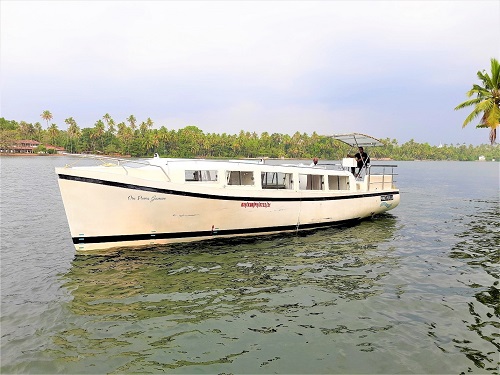
Dr. Anantha is with the Department of Ocean Engineering IIT Madras for the last 35 years. Dr Anantha has spent years of work in shipbuilding research and development and his insights offer great practical advice. As a naval architect, he has been a successful consultant of the shipbuilding and design industry catering to the requirements of clients both nationally as well as abroad. He is also a member of the Intellectual and Advisory Committee of IMRC. He recently designed and built a yacht, and the IMRC team jumped at the opportunity to interview him and share with you all about the building process and experience from Dr Anantha.
You have recently designed and built a yacht from scratch. What was the inspiration and purpose of embarking on such a unique project? And how do you intend to use it?
The inspiration was professional passion, creativity and an innovative technology-based product for potential pleasure tourism. I have been a professional naval architect, teacher, researcher, and consultant to the industry. Added to this, close interaction with the maritime industry gave me a natural yearning for designing and building our own yacht. Our recent waterfront home on an island in the river Periyar was a motivating factor to take up the yacht design. Extensive, picturesque calm backwaters and the prospects for heritage Muziris tourism gave the fillip to initiate this project. The concept of a family cruise boat is also not so common in our Indian tradition. These were the motivating factors and If this also empowers people and expands the segment of sustainable recreation, it would be a great satisfaction.
What are the specifications of the Yacht?
It is perhaps best to describe it as a Family Yacht. The principal dimensions are length 12m, beam 3.5m, depth 1.75m and design draught 0.7m. It is good for a day cruise for 12 persons on board, or as an overnight family cruiser. It is air-conditioned for comfort, and has a bedroom, lounge, kitchenette and eco-friendly zero waste bio-toilet. The kitchenette has a microwave oven and a mini fridge. The heavy loads are supported by a 5kVA diesel generator in the engine room. The main engine is a compact 38 HP Mitsubishi diesel engine which gives a comfortable cruising speed of 8 knots. The diesel fuel tank with 80 litres capacity provides fuel for comfortable cruises. The bedroom is in the forward area. The helms-wheel is at the aft and this means that you can either sail it yourself with family with comfortable seating in the open aft deck or the passengers can sit in the lounge in comfort during a cruise. The aft deck has an awning and provides seating for 8 persons with full all round view while sailing.
The uniqueness of the build is the vacuum infusion based total sandwich construction using multi-axial glass fibre reinforcement in resin matrix with a high shear strength sandwich core. This gives the boat unique properties namely, significantly light weight construction, high stiffness and strength and homogeneity of material. The high shear strength core material gives greater resistance to impact knocks. Maintenance of the fibre glass hull is much easier. The weight saving is significant, giving the advantage of low draught, more capacity for deadweight or payload also gives long term advantages in the operational cost.
How big was your team? And what are their qualifications?
I started this work along with my academic research and consulting projects as a matter of passion. It naturally involved my research and project team at IIT Madras. My general team numbered about 40 engaged in research and specific consultancy projects. Half of them were dedicated research scholars and the other half hired staff in the projects. All of them had the freedom to work in their areas of interest and passion. The combined team skills were proficiency in computer aided design tools, model manufacturing, machining, fabrication in fibre glass, carpentry, instrumentation (model testing related), in fact every engineering activity. It was always a mix of activities. They worked with dedication in so many different projects at the same time and of course in their own research too. There were project engineers, technicians, research scholars working at different aspects during the evolution of the design, performance of model testing for optimization, and finally a dedicated team of technicians during the construction process. The core team for the yacht construction was about 8 persons. There was a learning process for all of them throughout this project. For that matter the research we undertake and the consultancy projects we execute for the industry always involves a whole lot of learning through their execution. With regard to the technology of vacuum infusion, we had excellent support and training from the parent supplier company for the sandwich core material namely, DIAB of Sweden.
Did you first develop a proof-of-concept before going ahead with the full design? What were the considerations and learnings at that stage?
We were inspired by many of the yachts that are seen in Europe and America. We conceived a design with a classic look, meaning with a tumble home at the aft (ie., the hull curves in at the aft at the deck level) and gave a curved transom to accentuate the classic look. Our considerations were space, capacity, and speed besides the basic naval architectural technical requirements. Light weight was also a consideration since the vessel may operate in relatively shallow back water conditions. Hence, we worked with these parameters in mind. For example, we chose a generous 3.5m beam for the comfort of space. We chose a moderate speed of 8 knots and not high speed because of the wave wash that can otherwise happen frequently and would be objectionable in restricted waters. With these considerations we worked on the hull form, evolved the Lines, and model tested in the towing tank for powering and suitability of form. Small vital changes were made, such as for example, we opted for a more angled rake at the stem instead of the vertical rake first thought of. Then we made the full-sized plug which is the first step in manufacturing. Looking back, it was a challenge all the way. I believe engineering perfection comes by doing and persevering. It doesn’t happen automatically in one shot. In that sense, IIT Madras provides the greatest freedom to pursue your passion. The project was a combination with our industrial consultancy projects.
The final manufacture was done in an IRS certified factory we set up. The decision to go in for vacuum infusion sandwich construction was also critical. It meant more investment in equipment, closely controlled process which required trials and training. It was learning all the way, and I am happy to state we successfully achieved the goal. The most important outcome was that we achieved high degree of control in weight and center of gravity of the vessel.
How did you select the engine? What challenges did you face and how many days did it take you?
That is an important question. Engine selection might look straightforward based on power requirement. Though we had the option of combining main engine with power take off (P.T.O) for auxiliary power, it did not suit with the power usage on board the yacht. The power requirement was ascertained through tank tests, and the crux of the decision was to choose the right engine. Light weight engines are a luxury in India and after much search, we opted for a Mitsubishi marine engine, fortunately manufactured in India. Unfortunately, the common commercially available engines are simply too heavy. Along with it, we also opted for a Mitsubishi diesel generator set for the electrical load requirement. It also brings the fact to light that though we are a maritime nation, there are big gaps in the marine supply market – be it the sea water cooling system for the engines, the steering system, the control console, there is a learning experience in everything, and standardization is not straight forward.
What type of simulations did you run to test the engine functioning? What software/hardware did you require for the simulations?
The main simulation was the towing tank tests where a carefully scaled model is run to simulate the actual speed condition and the drag is measured to scale up and obtain the engine power. The towing tank test also confirms the streamlining of the hull form and ascertains that the wave pattern and flow are optimal. To decide the engine, we took inputs from potential engine suppliers. As I said earlier, engineering is a continuous learning process. Though we received support from the engine supplier, we have realized there is scope for improvement. There are many untold things, and you learn on the job. Hence though we worked with a team for who boat building was a first experience, we realized there are specialist jobs viz., engine mounts, shaft alignment which need meticulous care to details.
What materials have been used for the exterior build? Where did you find the required materials?
Again, an important question, and that takes me back to searching so much in a non-standardized market and searching for the right fabricators for so many systems. Your question reminds me again that we do not have specialist suppliers who could provide let us say, the right material railings, awnings, outfit items such as lights, horn, bollards, lightning protection systems, electrical systems, power backups, without our having to do much research. And that is exactly what happened. I would like to confess it was a challenge in many ways to find the right suppliers, provide them the right design, handholding them, and still ending up with situations which could have been avoided! For example, an electrical specialist not knowing boats, simply drilled through the hull to fix a wiring bracket! Good engineering is a matter of getting the details right and perfect, and that is not easy. We had to scout around for the right weather tight windows, for the windshield glass customized to our design, and I am happy to state that we fortunately found very exuberant, competent suppliers who went out of the way to develop and perfect the products.
Can you share a little about the interiors? What facilities does it have, and did you use a designer or any sample designs?
The layout of the vessel is planned as a single lower deck and an aft main deck. From the aft main deck, one steps down into the weather tight lower deck into the lounge. Forward of the lounge is the bedroom. We opted this layout after studying many comparable sized yacht designs. The rear starboard corner of the lounge has the kitchenette equipped with the microwave heating, a mini-fridge and modest cupboards and storage racks. The rear port side corner of the lounge is the location for the toilet. The layout requires critical planning because while weights have to be balanced to have a fairly level trim when afloat, at the same time comfort and convenience cannot be overlooked. Water-tight bulkheads have to be provided for safety and unnecessary penetrations have to be avoided. There are tanks holding liquids such as the freshwater tank, bio-digester tank for sewage, black water holding tank, grey water holding tank and along with these are the interconnecting pipes and the bilge pumping system. These are obviously unseen, but their location and layout critically matter. With hindsight we also realized some improvements are still possible. In a small vessel there is less freedom because of the space and trim issues. We have designed the lounge upholstery seating for comfort, informal layout and for good viewing of the outside. The unseen design element is the electrical system. It provides power for the minimal navigational lights system, battery and UPS power for the cabin light loads, and raw power from the DG set for the heavy loads namely the fridge, kitchen heating appliance and air-conditioner. Besides all these, there is the mandatory lightning protection system with flat copper strip running around everywhere.
What type of literature or previous research/development work is available out there for reference?
In this particular case besides the fundamentals of naval architecture that every designer uses, one needs ideas for the design and execution of the different components. You have asked a relevant question and I realize that balancing between rule requirements and implementing a good practical design is a challenge. So, while you may have plenty of data and images in the Internet, there is limitation in accessing literature for perfecting these details. Example the windshield, the handrails at the bow and at the aft, anchoring the bollards and the handrail posts. How to achieve integrity without messy penetrations with potential leaks all the time, water tightness of the panels, hatch coamings, elegant slider glass windows satisfying rule requirements, all these presented their own challenges. As I said, engineering perfection is hard to achieve, and one has to really work hard for it. It doesn’t come easily, passion and perseverance till you perfect. There is a point after which only practical experience helps.
Did you apply for and/or receive any funding for this project from the government or a private party?
No, we didn’t. However, since we executed this design with a larger objective as stated in the beginning, we expect it will bring changes. It could be in the direction of sustainable tourism, perhaps more builds as many have earnestly shown interest, and finally the satisfaction of bringing a small change in the way we see pleasure crafts and if I may say, family boat ownership!
For anyone trying to build their boat from scratch, what advise can you give them? Where can they start?
I would be happy to share whatever data they require for building a boat from scratch. It would indeed be great satisfaction seeing that happening. Such efforts would have a multiplier effect and lead to empowerment of people in so many ways. I would advise them to seriously consider vacuum infusion based sandwich construction. It is a single factor that gives great saving in weight, improvement in strength and naturally long life for the boat. I have been driven more by passion and less by economics, though I don’t overlook economics. So one can get off with a size to suit the budget with just passion and drive.
What are your next planned projects?
We are in the process of setting up a design and fabrication facility at Kochi (Cochin). This would cater to maintaining our own yacht, and also take up new builds or develop new designs. A facility for maintenance and repair has to be planned for and not to be underestimated, considering that you have to haul up 6 tonnes mass to the shore for underwater works!
This interview of Dr. Anantha was conducted by IMRC team. For any queries, write to us at iireresearch@isfgroup.in.

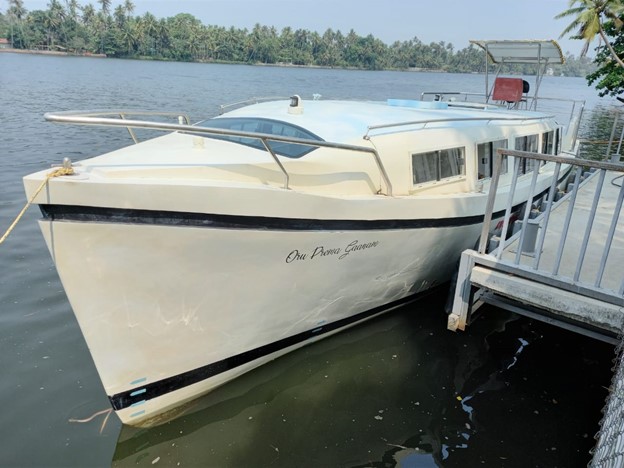
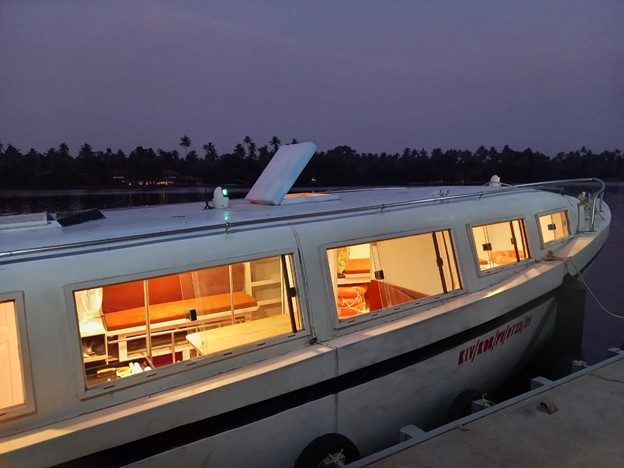
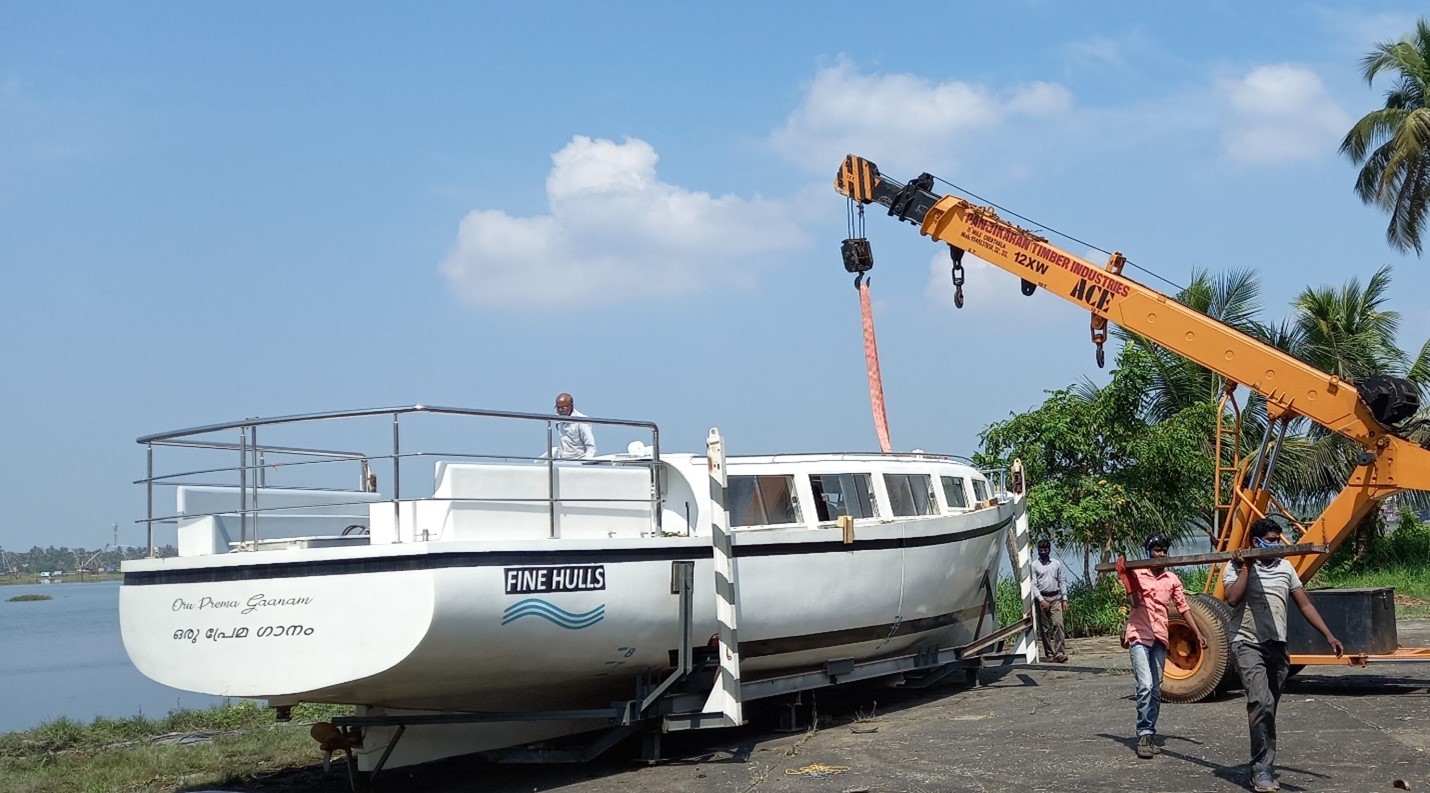
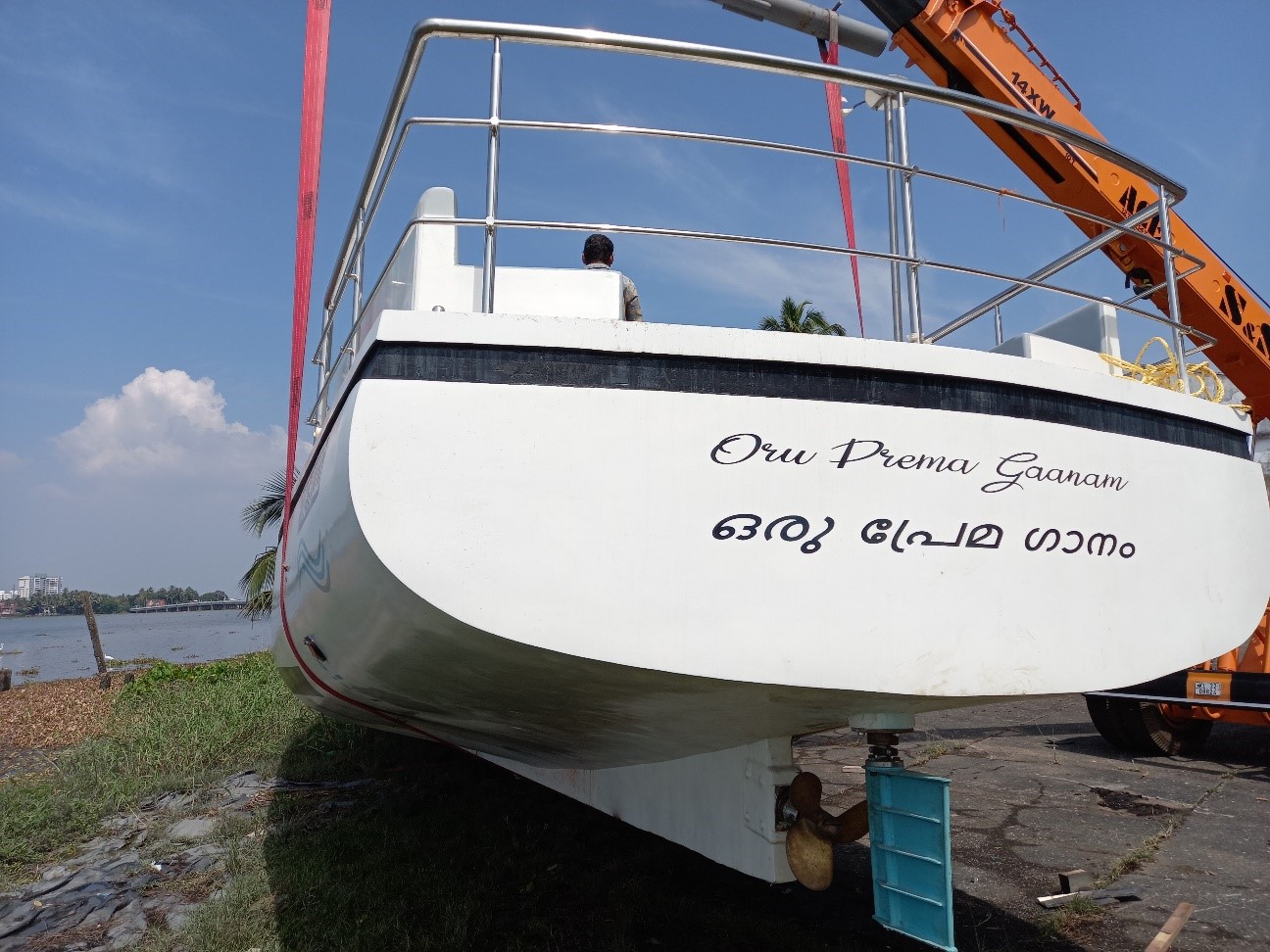
Date: 14 December 2021